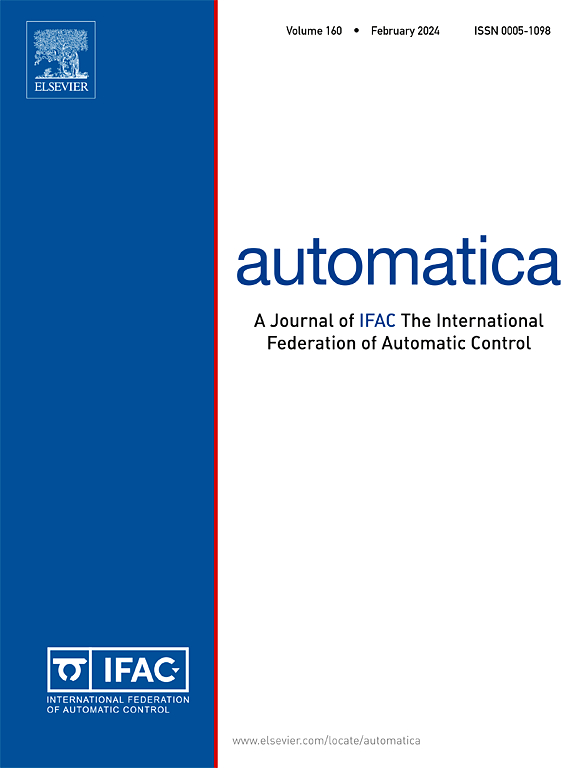Induced norm analysis of linear systems for nonnegative input signals
IF 5.9
2区 计算机科学
Q1 AUTOMATION & CONTROL SYSTEMS
引用次数: 0
Abstract
This paper is concerned with the analysis of the induced norms of continuous-time linear systems where input signals are restricted to be nonnegative. This norm is referred to as the induced norm in this paper. It has been shown recently that the induced norm is effective for the stability analysis of nonlinear feedback systems where the nonlinearity returns only nonnegative signals. However, the exact computation of the induced norm is essentially difficult. To get around this difficulty, in the first part of this paper, we provide a copositive-programming-based method for the upper bound computation by capturing the nonnegativity of the input signals by copositive multipliers. In the second part, we consider how far the induced norm can be smaller than the standard induced norm, and derive the uniform infimum on the ratio of the induced norm to the induced norm over all linear systems including infinite-dimensional ones. Then, for each linear system, we finally derive a computation method of the lower bounds of the induced norm that are larger than (or equal to) the value determined by the uniform infimum. The effectiveness of the upper/lower bound computation methods is illustrated by numerical examples.
非负输入信号线性系统的诱导范数分析
研究了输入信号限制为非负的连续时间线性系统的Lp(p∈[1,∞),p=∞)诱导范数的分析。本文将此模称为Lp+诱导模。最近的研究表明L2+诱导范数对于非线性反馈系统的稳定性分析是有效的,其中非线性只返回非负信号。然而,L2+诱导范数的精确计算本质上是困难的。为了解决这个问题,在本文的第一部分中,我们提供了一种基于组合规划的上界计算方法,该方法通过组合乘子捕获输入信号的非负性。在第二部分中,我们考虑了L2+诱导范数能比标准L2诱导范数小到什么程度,并在包括无穷维系统在内的所有线性系统上推导了L2+诱导范数与L2诱导范数之比的一致极小值。然后,对于每一个线性系统,我们最终导出了L2+诱导范数的下界大于(或等于)由一致下限值确定的值的计算方法。数值算例说明了上界/下界计算方法的有效性。
本文章由计算机程序翻译,如有差异,请以英文原文为准。
求助全文
约1分钟内获得全文
求助全文
来源期刊

Automatica
工程技术-工程:电子与电气
CiteScore
10.70
自引率
7.80%
发文量
617
审稿时长
5 months
期刊介绍:
Automatica is a leading archival publication in the field of systems and control. The field encompasses today a broad set of areas and topics, and is thriving not only within itself but also in terms of its impact on other fields, such as communications, computers, biology, energy and economics. Since its inception in 1963, Automatica has kept abreast with the evolution of the field over the years, and has emerged as a leading publication driving the trends in the field.
After being founded in 1963, Automatica became a journal of the International Federation of Automatic Control (IFAC) in 1969. It features a characteristic blend of theoretical and applied papers of archival, lasting value, reporting cutting edge research results by authors across the globe. It features articles in distinct categories, including regular, brief and survey papers, technical communiqués, correspondence items, as well as reviews on published books of interest to the readership. It occasionally publishes special issues on emerging new topics or established mature topics of interest to a broad audience.
Automatica solicits original high-quality contributions in all the categories listed above, and in all areas of systems and control interpreted in a broad sense and evolving constantly. They may be submitted directly to a subject editor or to the Editor-in-Chief if not sure about the subject area. Editorial procedures in place assure careful, fair, and prompt handling of all submitted articles. Accepted papers appear in the journal in the shortest time feasible given production time constraints.
 求助内容:
求助内容: 应助结果提醒方式:
应助结果提醒方式:


